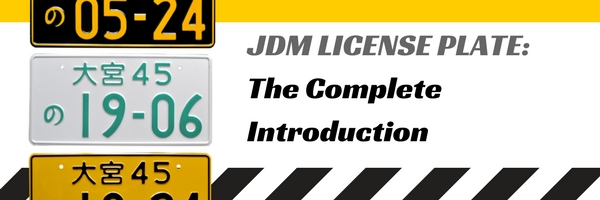About JDM License Plate
A license plate is the legitimate record of each car on the road. In Japan, the two-line JDM license plate also has its own unique characteristics. These hang on the car and include a few Japanese characters, other characters, and the numbers composed on the “number card” contain a lot more information than you’d think.

First, a brief history of the Japanese license plate. Japan’s license plate history can be traced back to 1907. That year was the first where Japan’s traffic laws mentioned the “vehicle number” provisions. And with time, it has evolved into the present look like this.
So how did the Japanese license plate start looking like this? As early as 1961, the Japanese government dictated the license plate style: classification number + the first word in the county + kana + vehicle number. Since then, the modern Japanese license plate began to take shape, and with more than half a century of development and adjustment, the JDM license plate has become a now easy to read and understand.
Japanese License Plate Types
Depending on the type of vehicle, Japan’s license plate background is distinguished by four colors: white, yellow, green, and black.

- Hanging a white JDM license plate is usually reserved for private cars with more than 1.0-liter engine displacement.
- Hanging a yellow license plate is reserved for private cars with an engine displacement of 0.66 liters.
- A black license plate is relatively rare, used for public transport cars or the light automatic car. The main purpose is to carry goods, not passengers.
- A green license plate used in public transport, taxis, buses and rented buses. Is a nationally recognized passenger tool.
Designs of the JDM License Plate
In Japan, as long as it is a four-wheeled vehicle, it will have a white license plate with green text. Why is it “basically”? Because the color of the license plate for commercial vehicles is the opposite (the green plate with white text). The k-car uses a black-bottomed license (the commercial vehicle is black). In addition, some special JDM license plates are more unique.
As for the size of the Japanese license plate, although there are three different specifications, the aspect ratio is 1:2, and it can be said that it is very structured.
Next, we discuss the composition of the four elements of the Japanese license plate.
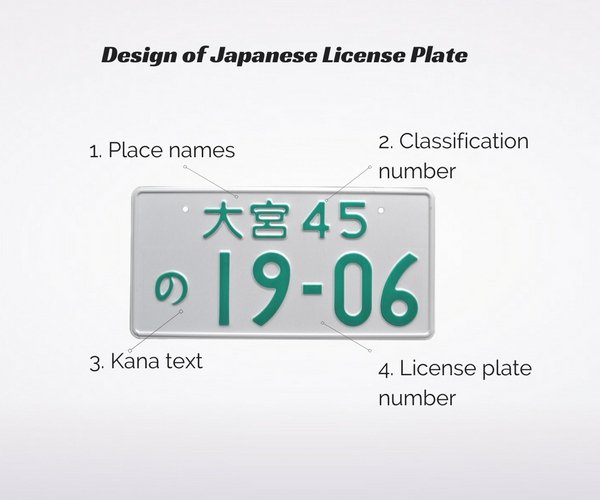
-
Place names
This “place name” refers to the DMV that issued the JDM license. In simple terms, the place where you register the car is the “place name” listed on the license plate. There are now 106 names in Japan. In general, these names are taken from Japan’s county-level division of the city, but the Japanese Ministry of Communications also allows some of the more representative municipal divisions of the city to their own smaller city name listed in the “plate name”.

-
Classification number
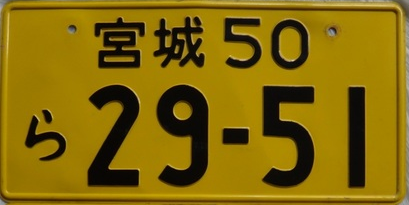
As the name suggests, this JDM classification number is used to distinguish a wide range of vehicles. In fact, we only need to see the first few digits on the left to distinguish one vehicle from another. From 0 to 9, different numbers represent different vehicles.
1: Truck
2: The number of passengers for cars that seat 11 or more (green on white)
3: The number of passengers 11 people the following car
4/6: Small trucks used for cargo purposes
5/7: The number of passengers for vehicles that seat less than 11
8: Special purpose vehicles (such as police cars)
9: Large-scale special-purpose vehicles
0: Construction machinery/vehicles (ex. excavators)
-
Kana text
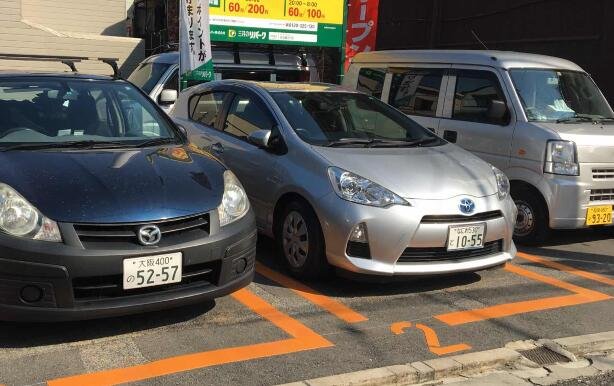
There are two main types of pseudonyms in Japanese.
First: used to distinguish the use of the vehicle.
Part of the pseudonyms will only be used for some non-private use of the vehicle. (For example, a car rental company’s kana text can only be れ or わ). In addition, there are some special cars that do not use kana characters, but the use of English letters (such as military vehicles).
Second: used to determine the order of the card on the vehicle.
Here ah car Jun gives an example. First, in order to help everyone understand better, everyone needs to understand the 50 sound, or ‘ah’. In fact, we only need to know the Japanese 50 tone, the pseudonym さ row before the pseudonym せ. Combined with this knowledge, you can understand this example:
Living in the same place (so the Japanese license plate names the same) A and B have bought new cars. Being so clever, they both buy Mazda 2 (that is, the same number as classification). And then, still so clever, the vehicle number is also the same. But, A bought before B, then the license plate was given to A first. So, what is the result? Very simple: the earlier card that A received will get the さ this pseudonym, and B will use せ this pseudonym. So, in the case where names, class numbers and even vehicle numbers are the same, the pseudonyms will become the only difference between the two license plates.
-
License plate number
In general, Japan’s license plate numbers are made up of four digits. I believe people may wonder because sometimes only three digits or even after a single number is printed on the license plate. Yes, they do exist, but if you want to get this type of license plate, you need to pass the way through the lottery.
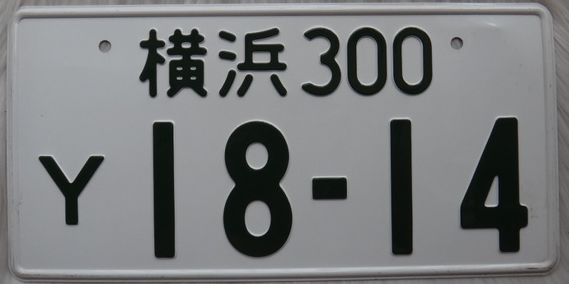
The Japan’s Ministry of Communications is quite human, in order to avoid issues, they do not release the numbers after 42 or 49. They do this so people are not upset with the license plate. But because the Ministry of Transportation only limited the latter two, so some people will not avoid, and will choose a similar 42-19 license plate (42-19 in Japanese means “step to death”).
With the above four points, we can basically understand the Japanese four-wheel motor vehicle license plate.
Special License Plates
In addition to the above Japanese standard license plate, the Japanese Ministry of Defense, the Ministry of Foreign Affairs, and other government departments have a special license plate. In addition, the Emperor and royal family’s car does not have a set license plate number. Instead, the royal family uses the chrysanthemum badge. Nevertheless, Emperor and royal family are still subject to the Japanese road transport vehicle law and other laws.
Word Light License Plate

An ordinary JDM license plate is different from the Word Light License Plate, because of a dedicated lighting tool that makes the font glow. This Japanese license plate is more easily identified at night or in bad weather. But to install this license plate, you need to pay more than the cost of an ordinary license plate, sometimes at least twice the price.
Local License Plate


Unlike conventional license plates, local license plates tend to have different shapes and even unique designs. These custom Japanese number plates are often of symbolic roles. When we see these different license plates, we know the different characteristics of different cities.
Temporary license plate

Japan’s temporary license plate is called “仮 ナ ン バ ー プ レ ー Suites”. The local transport commissions these plates by the city, district, town, or village government issued. The JDM plate is marked on behalf of the transport Bureau’su’s names, and city/district/town/village name in the left and lower right corner. The color is black and white, with an eye-catching red slash that crosses from the lower left to upper right.
Return To The Owner License Plate
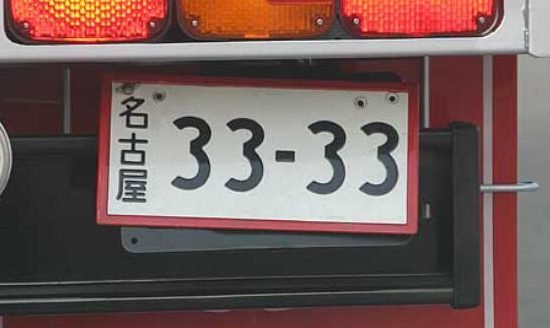
There are also cars issued with the “return to the owner license plate” (back to send ナ バ バ ー). The official name is “return to run the license number”. The license plate issued by the local transport bureau for the cars on sale or test drive vehicles.
In addition to cars, motorcycles, including bikes, have similar temporary and trial licenses.

